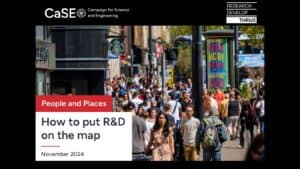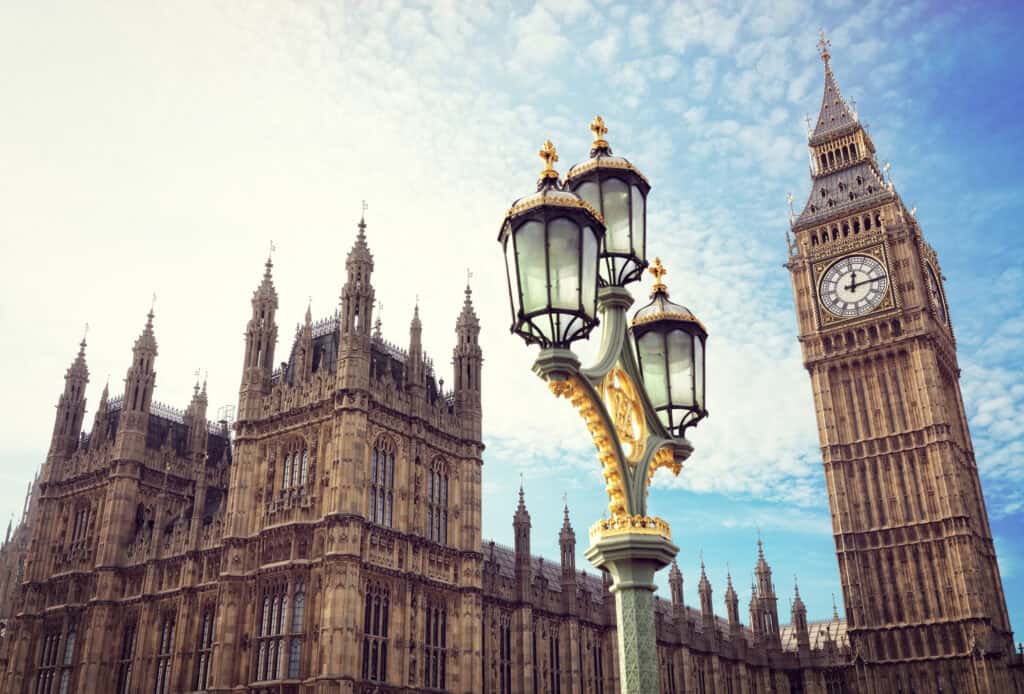CaSE’s Discovery Decade programme has shown that while a majority of people think R&D is important, it isn’t seen as urgent. This clearly demonstrates the need for R&D advocates – including CaSE – to make a clear and compelling case for R&D being a national priority.
Pilot studies
In 2023-24, CaSE delivered a series of pilot studies in Stevenage, Greater Manchester and Northern Ireland, which sought to put our research findings into practice.
The aim was to work with local R&D-relevant organisations to collaboratively develop a clear, compelling public facing identity for R&D in the area. CaSE convened small groups of stakeholders rooted firmly in their localities – ideally including some that did not normally work together – and used CaSE’s public opinion research to stimulate a discussion about local attitudes to R&D.
Drawing on the stakeholders’ on-the-ground experience engaging in that area, the groups collaboratively identified audiences and messages of particular interest and used this to inform a creative brief. Creative agency Luna 9 used this brief to develop a set of illustrative campaign assets that brought the group’s campaign choices to life.
We considered a range of areas as candidates, considering the size of the locality, established organisations and partners, existing links to R&D, and political salience. Our chosen areas were the town of Stevenage, the city region of Greater Manchester and the nation of Northern Ireland, with this latter workshop hosted in Belfast. As the pilots were a conceptual exercise, implementation of the campaigns was out of scope for this work, although each group was invited to take forward the campaign proposals that worked best for them and their area. One group, in Stevenage, did reach the stage of a set of out-of-home billboards for one concept.
These pilot studies emphasise the shared interests and common challenges of local groups and the R&D sector – and the benefits of working together to tackle them.



Recommendations
Our recommendations seek to support both the R&D sector and local actors and governments to embed R&D as part of an area’s identity. Taking such actions will help drive public awareness of, and support for, R&D; raise the area’s profile, attracting talent and investment; and inspire local communities through greater opportunities for skills, education and pride.
Build a distinct brand for R&D in your area
Open up R&D’s doors to local communities
Demonstrate R&D’s benefits and champion diversity among researchers and research
Encourage collaborations across disciplines, sectors and geographic areas
Prioritise building public connections with R&D when harnessing powers of devolution
CaSE has identified a set of lessons from our pilot exercises:
There is appetite for raising R&D’s local profile through coalition building:
Similar schemes should seek to secure the time and resource to transform shared enthusiasm into shared action.
Local data collection and analysis can bring deeper insights:
Similar schemes should consider including a stage that carries out specific local level quantitative or qualitative research early on in the process.
Co-developing a messaging strategy requires clarity and should include communities:
Similar schemes should ensure the development of a targeted brief and bring in public perspectives throughout the process.
Driving adoption requires consistent support, time and resource:
Similar schemes should consider offering follow-on funding to help drive adoption and identifying a lead partner from the outset.





